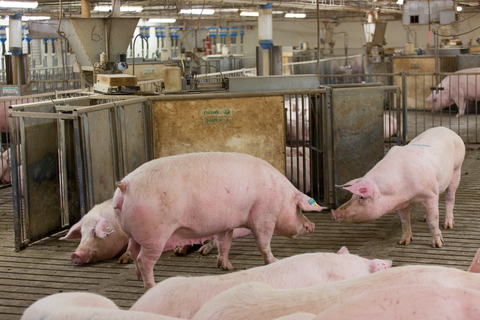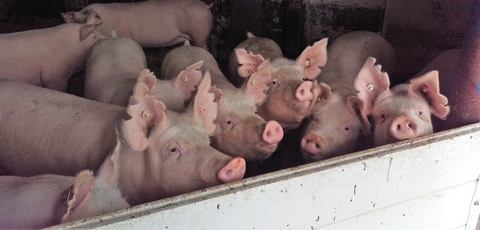Quick facts
- Hunger often results from optimizing reproductive performance by feeding less during gestation.
- Chronic hunger can lead to aggression and cause fight-related injuries in sows.
- Feeding high fiber diets can help satisfy the sow’s hunger without affecting reproductive performance.
- Selecting against skin lesions during mixing can reduce aggression among gestating sows.
Why is hunger an issue in sows?
Sow feeding challenges occur from the contrast between nutrient needs during gestation and lactation. For optimal reproductive performance, sows should eat less during gestation and more during lactation.
- Often during gestation, sows receive enough feed to maintain their body condition but not enough to satisfy their hunger.
- Limited-feeding leads to chronic hunger, which is a major welfare issue for gestating sows.
Hunger leads to unwanted behavior
Hungry sows confined in gestation stalls develop unwanted behaviors including such as bar biting, sham-chewing and aggression. In group-housing systems, limited-fed sows sustain more injuries from fighting than sows that had enough food to satisfy their hunger.
Feeding more fiber to solve hunger
Feeding high-fiber diets to gestating sows may enhance sow welfare during both gestation and lactation.
- Feeding high-fiber diets to fill the gut is an effective way to satisfy hunger and maintain body condition and reproductive performance in gestating sows.
- Feeding appropriate fermentable dietary fibers, such as sugar beet pulp, during gestation can increase voluntary feed intake during lactation.
- Increased feed intake during lactation may be a carry-over effect of gut fill during gestation.
Controlling sow aggression through genetics
Selecting against skin lesions at mixing can result in reduced aggression among sows. Genetic selection can be a solution to limit aggression among group-housed sows.
- Aggression in pigs is heritable, with a heritability of 0.31.
- Aggression among sows is difficult to measure.
However, aggression can be assessed through skin lesion scoring because there’s a strong genetic correlation between aggressiveness and skin lesions in sows.
Reviewed in 2019



